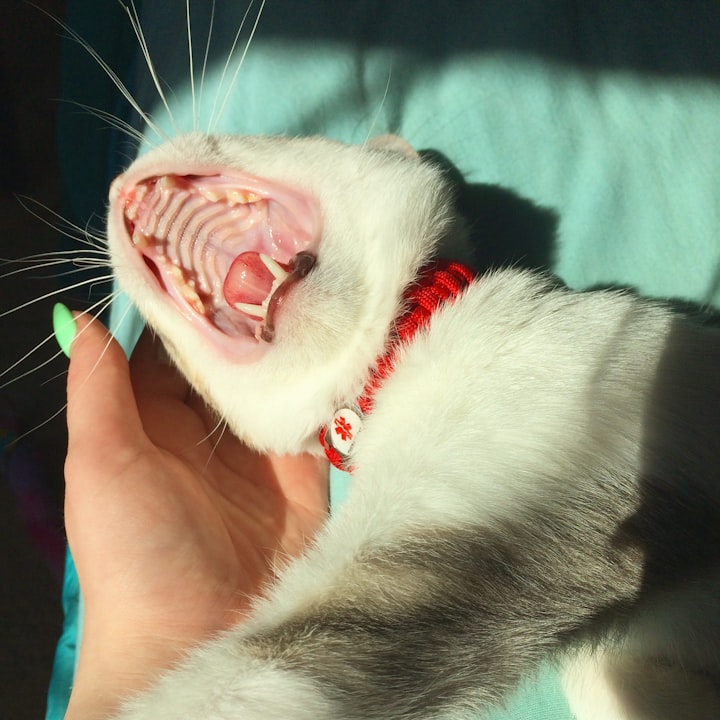If you notice a lump in your dog's chest, all your alarms should go off. In this article, we explain why it could be breast cancer in dogs and how the veterinarian can diagnose and treat it.
Symptoms: What are the signs of breast cancer in dogs?
The main symptom of mammary cancer in dogs is the appearance of one or several nodules in the region of the udders and mammary glands. They are usually solid and affect one or both milk lines.
If the tumor becomes inflamed, the tissue can become very swollen and cause the dog severe pain. In this case, many people confuse the hot and red areas with mastitis.
Diagnosis: how is it detected?
Most people detect breast cancer in dogs by noticing a lump on the animal's udder. If you notice a mass in this area, take it to the vet immediately.
The vet will feel the lumps, the surrounding glandular epithelium, and the lymph nodes in the area. With an X-ray, you can better see the tissue and find possible metastases in other organs.
An ultrasound allows for detecting alterations in the womb and assessing the malignancy of the tumor utilizing the echo pattern.
Blood and tissue samples for diagnosis
In addition, the vet will do a blood test to better assess kidney and liver function with specific parameters. If the cancer is advanced, it is also possible to detect tumor markers in the blood.
Sometimes the vet will also remove a tissue sample for analysis in a laboratory. However, this alone cannot always provide a firm diagnosis.
Treatment: how is it treated?
Breast cancer in dogs is usually treated with surgery and not chemotherapy. If the cancer is still at an early stage, it may be best to wait until the tumor reaches a certain size. In this way, the veterinarian can count on the best conditions for the intervention to be a success.
If only one milky line is affected, it may be enough to remove only this one. Instead, if both lines are affected, the vet will need to cut out a large area and possibly remove the entire udder.
In any case, it is important to take the animal regularly to the vet after the operation. Thus, you will be able to detect a recurrence of the tumor early and take action.
Prognosis: how dangerous is breast cancer in dogs?
Unfortunately, a mammary tumor in dogs usually has a high recurrence rate. This means that the tumor returns after a while, despite having been successfully removed.
Furthermore, the malignancy of breast cancer in dogs depends on these factors:
• type of cancer
• tumor size
• Degree of infiltration (affectation of the udder)
• Histological grade of malignancy
• dog age
• Lymph node involvement
Likewise, if the tumor has metastasized to other organs, such as the lung, this also worsens the diagnosis.
Other factors can worsen life expectancy. For example, the prognosis also depends on the dog feeding. You mustn't lose weight or muscle. A diet rich in fat and calories is essential because it helps the dog to fight strong weight loss.
Causes: what are the causes?
The dog's udder is a compound gland. Depending on the hormonal cycle —particularly the hormone progesterone—, it changes cyclically.
Since the glands are made up of different types of cells, there are also different kinds of breast cancer tumors. It is not uncommon for mixed forms derived from different cells to occur. For this reason, specialists classify breast cancer in dogs based on the affected cells:
Malignant tumors
benign tumors
Pathological hyperplasia (enlargement) or dysplasia (malformation) of the mammary gland
Non-infiltrating carcinoma
adenomas
ductal hyperplasia
complex carcinoma
Fibroadenoma
Lobular hyperplasia (pathological enlargement of the lobules)
simple carcinoma
Benign mixed tumor
cysts
Special types: spindle cell, squamous cell, mucinous, and lipid-secreting carcinoma
intraductal papilloma
duct ectasia
Sarcoma (eg, fibrosarcoma or osteosarcoma)
Focal fibrosis (pathological increase in connective tissue)
crcinosarcoma
Gynecomastia (enlarged mammary glands in males)
Occurrence: which dogs are more prone?
The mammary tumor is the most common in female dogs, but males can also get this type of cancer.
Crossbreeds tend to suffer less, while dogs of certain pure breeds are more or less prone. the collie and the Boxers are at lower risk, while the dachshund, the poodle, and the pointer tend to suffer more, according to studies.
In addition to sex and breed, the age of the animal also influences the risk of contracting the disease. Breast cancer in dogs usually appears at an advanced age, between nine and eleven years old.
Prophylaxis: can breast cancer in dogs be prevented?
There are a few ways to reduce the risk of mammary cancer in dogs. Although the pregnancy has nothing to do with it, you can protect your dog with the following measures:
1. Castration
Yes If you neuter your dog early, the chance of her getting breast cancer is lower. However, opinions on the best time for castration are mixed. In general, veterinarians recommend doing it between the first and second heat.
1. Feeding
It is known that obesity is a trigger for breast cancer in dogs. Therefore, give your furry a healthy and balanced diet. Adjust the amounts to your dog's needs. Also, make sure you get enough exercise.
1. Avoid hormonal treatments
Hormones or, better said, progestogens such as progesterone, favor the appearance of mammary tumors in dogs. If you are considering hormonal treatment, talk to your vet first.
1. Genetic tests
A mammary tumor in dogs may have a genetic origin. Although there are special tests to detect mutations in tumor suppressor genes (p53), the result is not always conclusive.
1. preventive exam
If your dog is older and not neutered, it is highly recommended to have an annual check-up at the vet. In this way, a mammary tumor in dogs can be detected and combated in time.
About the Creator
Abu Saleh
Content writer & Affiliate marketer. https://bestpetslover.com







Comments
There are no comments for this story
Be the first to respond and start the conversation.